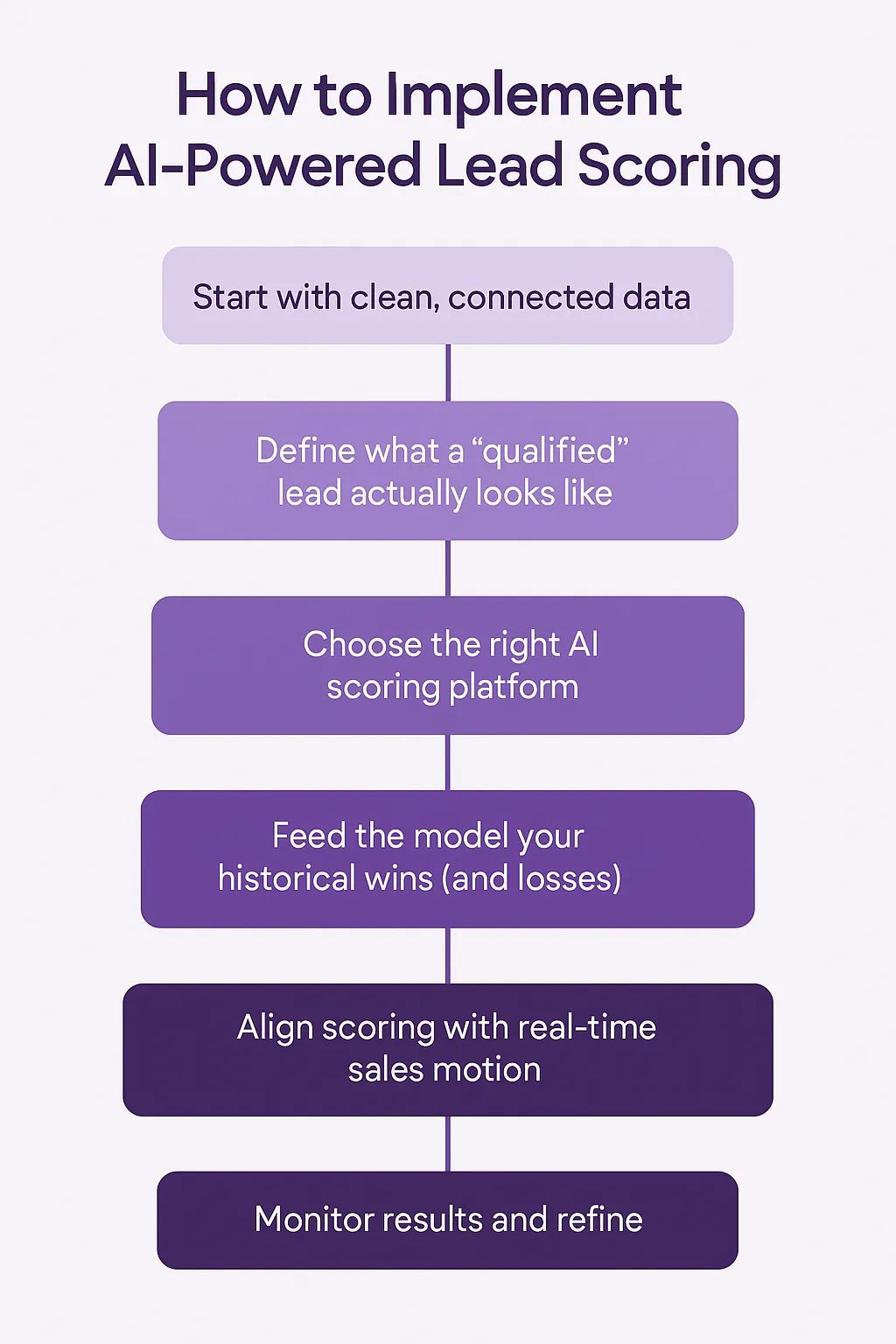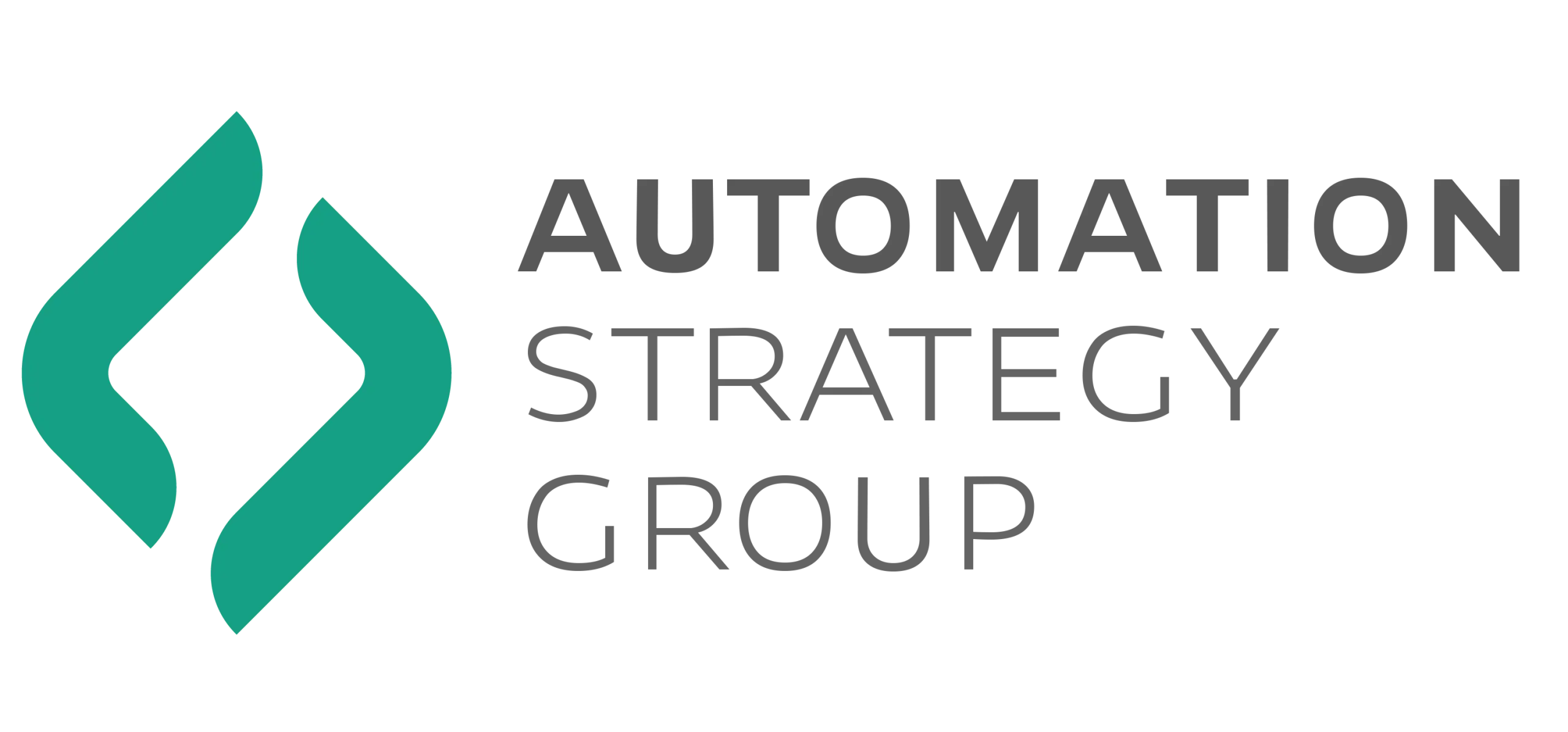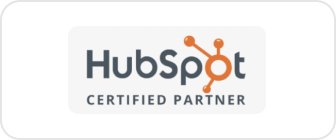-
Market Growth: The AI market for sales and marketing reached $57.99 billion in 2025 and is projected to grow to $240.58 billion by 2030, with an annual growth rate of 32.9%.
-
Revenue Impact: Companies using AI report revenue increases of 3%-15% and sales ROI improvements of 10%-20%.
-
Adoption Rates: 81% of sales teams are testing or fully using AI solutions, and 72% of companies have integrated AI into at least one business function.
-
Efficiency Gains: AI saves sales professionals over 2 hours daily, boosting active selling time by 25%.
-
Customer Insights: AI-driven personalization increases customer retention by 10%-30% and boosts satisfaction levels.
Key Benefits of AI & ML in 2025:
-
Predictive Analytics: It helps businesses forecast trends, generate 50% more leads, and make faster decisions.
-
Personalized Marketing: It drives engagement, with 88% of marketers saying AI improves campaign personalization.
-
Automated Lead Generation: It increases conversion rates by up to 52% and reduces costs by 33%.
How AI & ML are Changing Sales and Marketing in 2025
In 2025, businesses utilizing AI & ML in sales and marketing have seen improvements in decision making, smarter processes and efficient teams. It utilizes tools to enhance predictions, create personalized campaigns, and automate lead generation.
1. Predictive Analytics for Better Decisions
Predictive analytics utilizes historical data to forecast customer behavior and sales trends. The results? Businesses see measurable gains:
-
Annual earnings can rise by 10%
-
Conversion rates improve by 20% through personalized recommendations
-
Dynamic pricing models increase revenues by 10%
-
Demand forecasting cuts inventory costs by 15%
while improving delivery timelines.
Real-world Scenario
DHL invested $350 million in 2025 to digitize its operations through the MySupplyChain platform, which integrates predictive analytics. This upgrade provided end-to-end visibility, optimized resource use, and automated workflows, enabling DHL to adapt to real-time demand.
Walmart also leverages predictive analytics to anticipate demand and optimize inventory, ensuring essential items are available during events like weather disruptions.
By 2025, over half of businesses are expected to adopt AI-driven predictive tools, with 56% reporting faster decisions and 64% noting improved operational efficiency.
Next, let’s look at how machine learning deepens customer engagement through personalized marketing.
2. Personalized Marketing with Machine Learning
Machine learning takes personalization to a new level by analyzing vast datasets to identify customer preferences and behaviors.
According to McKinsey insights, 71% of consumers expect tailored interactions, and 80% believe personalized campaigns improve their overall experience.
Meanwhile, 88% of marketers say AI enhances their ability to deliver personalization. Businesses utilizing targeted promotions see tangible benefits, including a 1–2% boost in sales and a 1–3% lift in profit margins.
Companies like Netflix, Amazon, and Spotify lead the charge. Netflix analyzes viewing history and ratings to suggest content that keeps users engaged.
Amazon uses predictive analytics to recommend products based on browsing and purchase history, while Spotify segments listeners by habits to create custom playlists.
Even established brands like Coca-Cola rely on segmentation to craft targeted campaigns, and Expedia optimizes content to offer personalized travel suggestions.
Building on these tactics, AI also streamlines sales processes by automating lead generation.
3. Automated Lead Generation and Scoring
AI simplifies lead generation by automating the process of identifying, qualifying, and nurturing prospects.
Businesses that have adopted AI-driven lead scoring report a 51–52% increase in lead-to-customer conversion rates. In some cases, sales-qualified opportunity rates jump from 4% to 18%.

Source: Warmly.ai
AI-powered chatbots play a pivotal role, speeding up lead qualification by 60%, doubling sales-ready leads, and reducing costs by 33%.
For example, Guild Mortgage uses Outreach’s AI-driven tools to identify high-value leads faster, reduce manual follow-ups, and personalize outreach efforts. This approach doubled their lead response times and accelerated deal closings.
“Keeping up with demand in this increasingly competitive landscape wouldn’t be possible without technology. We want to give our loan officers the tools and the data that they need to advise customers and to execute, especially on lead conversion.” Gemma Currier, Senior Vice President of Retail Sales Operations at Guild Mortgage
Further, Intercom’s chatbot demonstrates AI’s impact, boosting qualified leads by 73% by engaging website visitors with customized prompts and guiding them through tailored next steps.
Additionally, hyper-personalized AI tools increase email open rates by 50%, with 93% of marketers reporting that intent data helps them convert high-quality leads faster.
2025 AI/ML Data: Key Statistics and Trends
AI and machine learning are no longer just buzzwords – they’re reshaping how businesses approach sales, marketing, and overall growth. Current data shows not only widespread adoption but also a measurable impact on revenue generation strategies.
Adoption Rates and Market Growth
The AI market for sales and marketing is projected to grow from $57.99 billion in 2025 to $240.58 billion by 2030, with a compound annual growth rate of 32.9%.
Similarly, the global machine learning market is expected to hit $113.10 billion by 2025. These numbers highlight the massive investment and interest in these transformative technologies.
In 2024, 72% of companies worldwide reported using AI in at least one business function, and 83% identified AI as a top priority in their business strategies.
Marketing and sales departments, in particular, are leading the charge, prioritizing AI and ML for revenue growth 40% more than other departments.
By 2025, Global 2000 companies are expected to allocate over 40% of their IT budgets to AI projects.
The retail industry stands out, with 80% of retail executives planning to adopt AI automation by the end of 2025.
Additionally, 48% of businesses leverage AI to make sense of large datasets, showcasing the growing reliance on these tools for actionable insights.
AI is also revolutionizing customer interactions. By 2025, 19 out of every 20 customer interactions will involve AI assistance, signaling a shift toward AI-powered communication as the norm.
“AI isn’t just about replacing jobs; it’s about redefining them. While machines take over repetitive tasks with speed and precision, the future belongs to those who can leverage AI to create, innovate, and tackle challenges we haven’t yet imagined. The real danger isn’t losing jobs to AI – it’s not knowing how to work with it effectively.” – Makhmudjon Sodikov, ML Engineering Manager at Vention
These trends underscore AI’s growing role in driving efficiency and revenue across industries.
Performance Results and ROI
AI and ML are delivering tangible returns on investment, especially in marketing and sales.
Companies using AI-driven marketing strategies report a 50% boost in productivity, alongside 45% greater efficiency and 38% more breakthroughs. These improvements directly contribute to stronger financial performance.
Revenue gains are significant, with companies reporting 3%–15% increases in revenue and 10%–20% improvements in sales ROI thanks to AI
Personalization, powered by AI, is a key driver of these results. Businesses utilizing AI for personalization see 10–30% higher revenue and customer retention rates. Fast-growing companies, in particular, generate 40% more revenue from personalization efforts compared to slower-growing peers.
AI is also transforming lead generation. AI algorithms can boost lead generation by up to 50%, while cutting call times by 60% and overall costs by as much as 60%.
Email marketing benefits significantly as well, with 41.29% of marketers reporting higher revenue when using AI tools
Looking ahead, AI is expected to increase employee productivity by 40% by 2035, suggesting that the current gains are just the tip of the iceberg.
Adoption rates are climbing by up to 20% annually, as businesses shift from off-the-shelf solutions to customized AI systems capable of automating complex tasks with minimal human oversight.
“Organizations need to first sit down, establish realistic goals, and evaluate where AI can support their people and how it can be incorporated into their business objectives.” – Max Belov, CTO at Coherent Solutions
The companies seeing the most success are those that treat AI as a tool to enhance human capabilities. By utilizing AI to improve decision-making, personalize customer experiences, and streamline repetitive tasks, these organizations are setting themselves up for sustained growth.
How to Add AI & ML in Sales and Marketing
Incorporating AI and ML into sales and marketing can transform how teams operate, offering new ways to enhance productivity and strategy.
Here’s how you can effectively integrate these technologies into your workflow without disrupting your team’s balance.
1. Building AI-Human Workflows
The best AI systems don’t replace people, they work alongside them, making their jobs easier and more efficient. Start by analyzing your sales process to identify areas where AI can take over repetitive tasks or provide deeper insights. Tailor these solutions to specific roles to maximize their impact.
Before diving into AI tools, set clear goals for your marketing efforts. Are you aiming to generate more leads, refine customer segmentation, or improve campaign results?
Knowing what you want to achieve helps you pick the right tools and measure their success.
For instance, Cleveland Clinic implemented an AI virtual assistant to handle patient inquiries, cutting call center volumes by 25% and boosting customer satisfaction by 15%.
“AI enables scalability in ways that would otherwise be impossible.” – HubSpot’s State of AI report
Data quality is another critical factor. Poor data leads to poor AI performance, so gather accurate, unbiased information and collaborate across teams to secure the best datasets.
With solid data, you can build customer segmentation models that group individuals by shared traits, enabling highly personalized marketing. Companies that prioritize customer analytics are 23 times more likely to excel in acquiring new customers.
Once your workflows are streamlined, it’s time to choose AI tools that align with your objectives.
2. Picking the Right Tools and Platforms
Selecting the appropriate AI tools necessitates a solid understanding of your team’s technical skills, budget, and existing infrastructure.
It’s important to choose tools that are easy to integrate, align with your budget, and provide the required features. Starting with a pilot program is a wise approach to evaluate their effectiveness before implementing them on a larger scale.
The market offers a range of AI tools for various budgets and use cases. For example, My AI Front Desk starts at $65/month, while Clay offers plans ranging from free to $800/month for advanced features.
Companies like Amazon demonstrate the power of AI with their recommendation engine, which drives 35% of their sales by suggesting products based on browsing and purchase history.
Similarly, BMW uses AI chatbots and targeted ads to deliver personalized promotions, leading to a 15% increase in new car inquiries.
To make the most of these tools, use a centralized CRM system to keep customer data accessible and consistent. This ensures your AI tools have all the information they need to make accurate predictions and recommendations.
Personalization is key – AI-driven recommendation systems can offer tailored content and product suggestions, boosting customer engagement and conversions.
As you integrate these tools, don’t overlook the importance of data privacy and compliance.
3. Data Privacy and Compliance Requirements
When deploying AI, compliance with legal, ethical, and operational standards isn’t optional – it’s essential. Gartner predicts that by 2025, half of the world’s governments will require enterprises to adhere to various AI-related laws and data privacy regulations.
Ensure your data complies with laws like GDPR and CCPA by implementing strong data governance policies. The financial risks of non-compliance are significant.
For instance, DoorDash agreed to a $375,000 settlement in 2024 for violating the CCPA by selling customer data without proper notice or opt-out options.
Similarly, Sephora paid $1.2 million for failing to disclose data sales and process opt-out requests.
To build trust, embed privacy into the design of your AI systems and be transparent about how customer data is used. Provide clear privacy policies and give customers control over their information. Regular audits of your marketing automation systems and third-party certifications can further secure your data.
Human oversight is also crucial. Make sure customers can escalate complex issues to a real person when needed. Regularly review AI interactions to ensure they align with your brand’s voice and comply with legal standards.
Finally, invest in training your team to use AI tools effectively while understanding compliance requirements. Address ethical concerns and biases in AI models proactively, as this approach not only mitigates risks but also enhances performance over time.
Future Trends of AI in Sales and Marketing
AI’s impact on sales and marketing has already been transformative, but the journey is far from over.
Looking beyond 2025, new technologies promise to reshape how businesses engage with their customers, creating interactions that feel more intelligent, natural, and responsive.
According to Statista, with the AI market projected to surpass $800 billion by 2030, there’s a massive opportunity for businesses ready to embrace these advancements early on. This next wave of AI and ML innovation builds on today’s successes, pushing the boundaries of what’s possible in marketing.
“AI adoption is progressing at a rapid clip, across PwC and in clients in every sector. 2025 will bring significant advancements in quality, accuracy, capability and automation that will continue to compound on each other, accelerating toward a period of exponential growth.” – PwC
Two key technologies leading this charge are multimodal AI, which enables seamless communication across various input types, and reinforcement learning, which allows campaigns to adapt and optimize themselves in real time.
Trend 1: Multimodal AI: Transforming Customer Interactions
Multimodal AI is a game changer, moving far beyond the capabilities of text-based chatbots or simple voice assistants.
This technology can simultaneously process and interpret voice, text, images, video, and even facial expressions, creating interactions that feel more human.
Instead of limiting customers to a single channel, multimodal AI adapts to their preferred way of engaging.
The numbers highlight its potential: the multimodal AI market is expected to grow at an annual rate of 36.92%, reaching $42.38 billion by 2034. By 2025, 80% of customer service teams are predicted to implement generative AI tools to enhance both agent productivity and customer satisfaction.
The results speak for themselves. Real-time data integration through multimodal systems has been shown to boost customer engagement by 45% and increase conversion rates by 35%.
For example, L’Oreal’s Beauty Gifter chatbot collected data from 31% of its users, with 82% providing positive feedback.
What sets multimodal AI apart is its ability to understand context across multiple inputs. Imagine a system that can analyze a customer’s tone during a call, reference past chat history, and interpret shared images, all to deliver a highly personalized experience. This level of contextual understanding goes beyond traditional personalization methods, offering a more nuanced and responsive approach.
The technology is also evolving toward autonomous decision-making and adaptive learning, meaning it gets smarter with every interaction.
With 35% of U.S. households already using smart speakers, businesses are optimizing for voice-driven queries, leveraging natural language and long-tail keywords to meet customer needs.
While multimodal AI focuses on enhancing customer interactions, reinforcement learning is poised to revolutionize how businesses manage and optimize their marketing campaigns.
Trend 2: Reinforcement Learning: Self-Optimizing Campaigns
Reinforcement learning is changing the game for campaign management by enabling systems to learn and adapt on the fly.
Unlike traditional A/B testing, which delivers static results, reinforcement learning continuously adjusts campaigns based on real-time consumer behavior.
By 2025, over 60% of enterprise marketing teams are expected to adopt reinforcement learning. Companies that leverage this technology have reported up to a 30% improvement in marketing efficiency.
Several pioneers are already making strides in this area. Aampe uses reinforcement learning to tailor product experiences to individual users. Offerfit enables dynamic campaign optimization, while Motiva AI applies the technology to email marketing. Just Words uses reinforcement learning to improve push notifications.
What makes reinforcement learning so powerful is its ability to handle complex, multifactorial analysis. It accelerates campaign performance, scales personalization efforts, and even fine-tunes pricing strategies by learning from market responses and customer behaviors. For instance, these systems can adjust content delivery in real time to better align with individual preferences.
“AI agents are set to revolutionize the workforce, blending human creativity with machine efficiency to unlock unprecedented levels of productivity and innovation.” – PwC
To get started with reinforcement learning, businesses should consider launching pilot projects to test its potential, invest in robust data systems, and establish clear guidelines to ensure transparency, fairness, and customer privacy.
It’s important to view reinforcement learning as an ongoing process, not a one-time solution.
Hyper-personalization at scale will become standard, predictive analytics will allow businesses to anticipate trends before they happen, and real-time customer feedback will enable marketing strategies to adapt instantly.
Companies that start experimenting with these innovations now will be well-positioned to lead in the years ahead.
Business Case for AI/ML in Sales and Marketing
The numbers speak for themselves. AI-driven algorithms can increase leads by up to 50%, all while slashing call times and operational costs by as much as 60%. Early adopters are already seeing tangible results, with a 15% uptick in sales leads and a 10–20% reduction in marketing expenses.
Among sales teams, over 75% are actively experimenting with or have fully embraced AI, and 80% of those teams report revenue growth, compared to just 60% for teams not leveraging AI.
And the momentum is only growing. By 2028, global investments in AI for marketing and sales are expected to exceed USD 100 billion. McKinsey even projects that generative AI alone could contribute up to USD 4.4 trillion annually to the global economy.
Staying ahead means adopting advanced AI solutions. Over 70% of top-performing executives agree that cutting-edge generative AI is essential for maintaining a competitive edge.
By 2027, nearly all seller research workflows – 95%, to be exact – will begin with AI, a dramatic jump from under 20% in 2024. Generative AI is also set to boost enterprise marketing productivity by more than 40% by 2029.
AI is transforming campaign creation, enabling hyper-personalized experiences, predictive analytics for smarter decisions, and automation that frees up teams to focus on creativity and strategy. These results highlight the importance of a well-thought-out implementation strategy.
How To Maximize AI in Sales & Marketing: Best Practices
To harness the full potential of AI, businesses need a clear, strategic plan. Here’s how to get started:
-
Define clear objectives.
Pinpoint areas where AI can have the most impact. Start with productivity goals before shifting focus to revenue growth. -
Start small with pilot projects.
Test AI solutions on a smaller scale to identify challenges and refine the approach. Prototypes and stakeholder feedback are key here. -
Prioritize clean data and track performance.
Ensure data accuracy and compliance while setting measurable KPIs tied to outcomes like ROI, adoption rates, and customer satisfaction. -
Build expertise or find the right partners.
Bring in data scientists, machine learning experts, and engineers – or collaborate with an experienced AI partner. Encourage collaboration between technical and business teams. -
Focus on integration and company culture.
Seamlessly incorporate AI into existing systems and workflows. Promote a data-driven mindset and prepare teams for new processes. -
Commit to ethical AI practices.
Develop transparent and fair guidelines. Ensure compliance with regulations and conduct thorough risk assessments. -
Monitor and refine continuously.
Use KPIs to track performance, adjust strategies as needed, and keep improving your AI models.
By following these steps, businesses can maximize the benefits of AI, integrating predictive analytics, personalization, and automation into a unified strategy.
Final Thoughts
AI and machine learning (ML) are no longer futuristic concepts – they’re reshaping sales and marketing right now. From generating quality leads to retaining loyal customers, these technologies are driving measurable progress and redefining how businesses compete in 2025 and beyond.
At Automation Strategy Group, we’re here to guide you through this journey. From assessing your needs to implementing and optimizing your AI strategy, our team of experts is ready to help you unlock the full potential of AI for your business.
Optimize Your Marketing Automation
Partner with certified experts to enhance your sales funnel, improve lead engagement, and maximize ROI with tailored strategies for HubSpot, ActiveCampaign, and Eloqua.
.
Frequently Asked Questions
How can businesses adopt AI and machine learning in sales and marketing without disrupting their current strategies?
To integrate AI and machine learning into your business smoothly, start by incorporating these tools into existing systems like CRM software. Choose AI solutions that enhance current workflows, such as predictive analytics for better customer insights and decision-making.
Train your team to use these tools for tasks like lead generation and personalized engagement, ensuring AI acts as a helpful ally. Regularly check AI outputs for accuracy and alignment with business goals to avoid disruptions. These steps can enhance your sales and marketing efforts with minimal disruption.
What ethical challenges and compliance requirements should businesses consider when using AI in sales and marketing, and how can they address them?
Integrating AI into sales and marketing presents ethical challenges, including data privacy, algorithmic bias, and transparency. Businesses must protect customer trust by handling data responsibly, complying with regulations like GDPR and CCPA, and ensuring fairness in AI systems. Transparency is essential; customers should know how their data is used and how AI influences decisions. To address these challenges, businesses can implement a responsible AI framework. This includes conducting regular audits, training employees on ethical practices, and creating clear data usage guidelines. Engaging stakeholders—such as customers and regulators—can enhance compliance and build confidence in AI solutions.
What makes reinforcement learning different from traditional A/B testing for marketing campaigns, and how can it improve results?
Reinforcement learning (RL) offers a dynamic approach compared to traditional A/B testing by adjusting strategies in real time based on user behavior. This continuous refinement allows businesses to stay aligned with changing customer preferences. Key advantages of RL include personalized experiences, improved ROI through adaptive techniques, and enhanced customer lifetime value. Its ability to respond instantly to market shifts makes marketing efforts more efficient and impactful.
References:
https://www.globenewswire.com/news-release/
https://www.itransition.com/machine-learning/statistics
https://ventionteams.com/solutions/ai/report
https://www.coherentsolutions.com/insights/ai-adoption-trends-you-should-not-miss-2025
https://explodingtopics.com/blog/ai-statistics
https://www.statista.com/forecasts/1474143/global-ai-market-size
https://convin.ai/blog/multimodal-ai-rnzkc
https://www.ibm.com/think/topics/ai-in-marketing
https://www.marketsandmarkets.com/Market-Reports/ai-for-sales-and-marketing-market-45678598.html
https://www.gartner.com/en/sales/topics/sales-ai
https://www.mckinsey.com/capabilities/quantumblack/our-insights/the-state-of-ai





